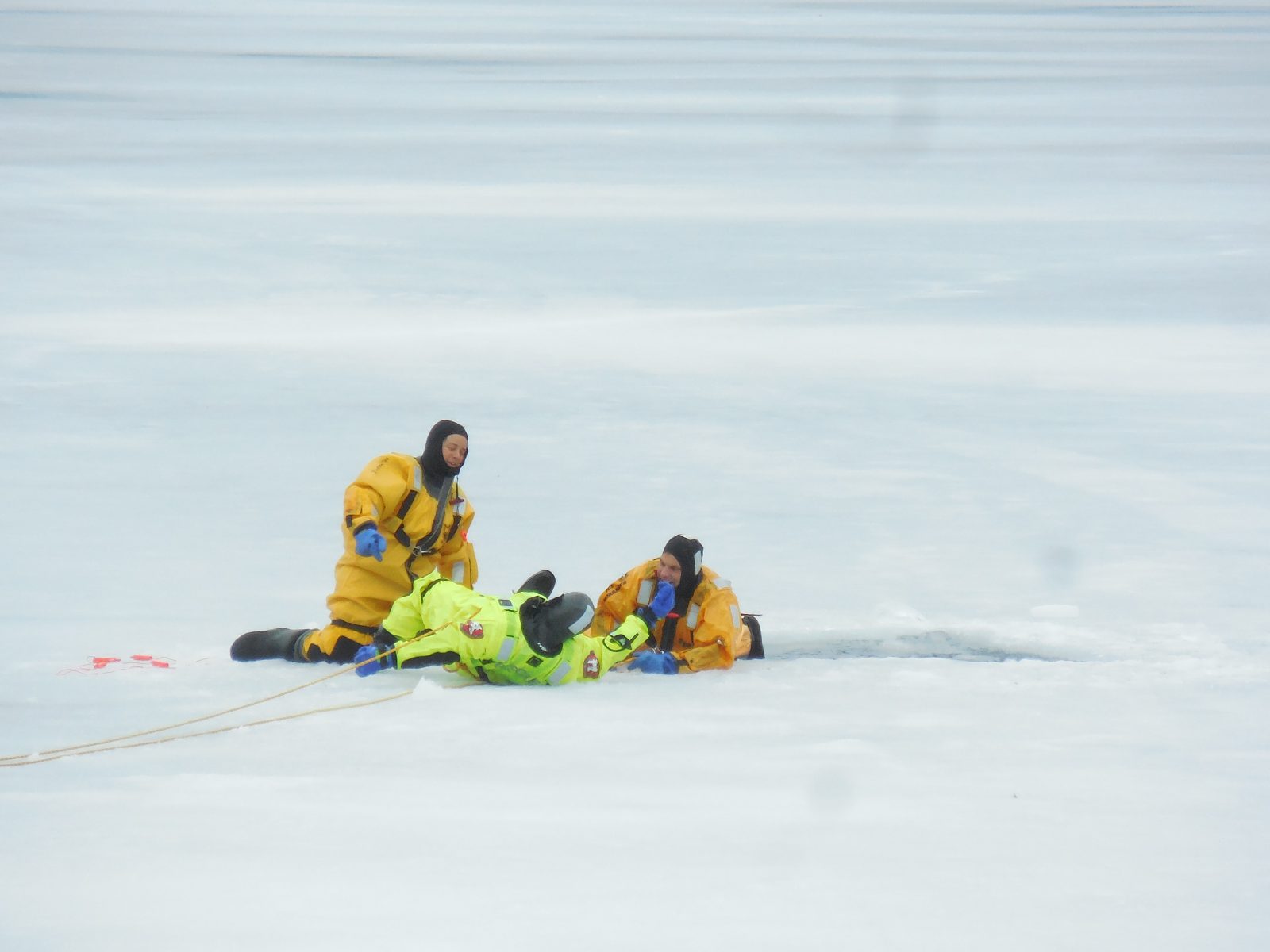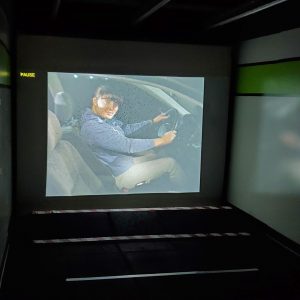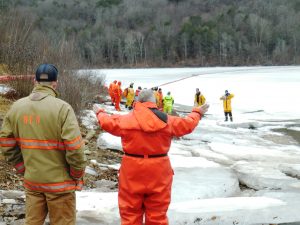
Mass Firefighting Academy holds ice rescue training on Littleville Lake. (Photos by Amy Porter)
HUNTINGTON – The Massachusetts Firefighting Academy (MFA) held a surface ice rescue class at Littleville Lake on Saturday. Trainer Mark McCabe of the MFA and Braintree Fire Department said the firefighters would be practicing self-rescue and rescuing each other, learning how to “talk to the victim, approach the victim and rescue the victim” and how to interpret ice conditions, such as grey ashen ice, indicative of water in the ice.
While the ice is still 11 inches thick at many spots on the lake, the water was open near the boat launch. McCabe said under the ice in the water different things are happening, such as warm springs, or schools of fish.
“No ice is safe. Every fire department will say no ice is safe. The only ice that is safe is a skating rink,” McCabe said. He said recent rescue incidents have involved children, dogs and deer.
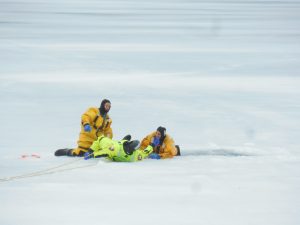
Firefighters practice rescuing each other with lines.
Firefighters from Huntington, Richmond, Longmeadow, Linfield, and Southwick participated in the training for a certificate. Donning ice rescue suits, they first jumped into the 38 to 42 degree water in holes in the ice that had been carved out by chainsaws, and pulled themselves out. Then they practiced rescuing each other using the lines their partners held on shore. While in the water, other groups practiced throwing out lines.
Also demonstrated was ice rescue using a floatable craft rescue boat. “Don’t put all your rescue eggs in one basket – have more than one option,” said instructor Thomas Rinoldo.
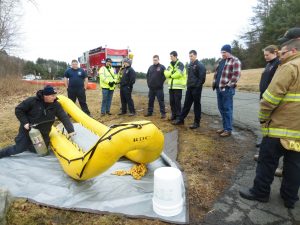
Instructor Thomas Rinoldo demonstrates use of an inflatable rescue craft.
Rinoldo said the craft he was demonstrating has multi-uses over all water programs. With three chambers, three fill stations and three relief packs, it inflates in one minute. He said the cost for the boat is $5,000, but other inflatable craft and boats may be used for rescue, although flat-bottomed boats work best on ice.
The “banana boat” Rinoldo used is open at both ends, so the boat can be brought right over the victim to pull them in, and then have the shore team pull the boat, which is attached to a safety line, onshore. He said the shape of the boat lends itself to stability.
Rinoldo said the boat may also be used for animal rescue, but firefighters need to watch for claws. He said they have had it down to one chamber inflated and it still stays buoyant.
McCabe said MFA instructors for the ice rescue class came from the Framingham, Sharon, Easthampton, Swansea, Agawam and Braintree Fire Departments. He said he had to give credit to the firefighters who were there on their own time, taking a day off from work or from the fire house.
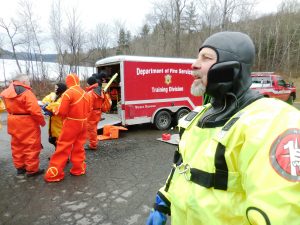
Lt. Steve Graydon of the Huntington Fire Department prepares to jump in 40 degree water for ice rescue class.
McCabe also gave credit to the Huntington Fire Department for having the foresight for putting together the training. He said they started organizing it in June, got permission from the Army Corps of Engineers and classroom permits.
“Ice rescue happens more often than people think,” McCabe said.
Matthew Coleman of the US Army Corps of Engineers who manages the Littleville Reservoir was also observing the ice rescue class. He said when Captain John McVeigh of the Huntington Fire Department called to ask for permission to do the training there, he told him, “Absolutely, we’d be happy to support that.”
Coleman said he doesn’t remember any incidents at Littleville since he’s been there, but he knows “ice is tricky.” He said Littleville, which is popular for ice fishermen, is “kind of an ice box – one of the few that still has coverage.” Coleman said he takes measurements of the ice, and will tell people the results when they call, but he doesn’t encourage them to go out on it.
As for the ice rescue, “If we ever had a situation, this is what they would have to do,” Coleman said.

